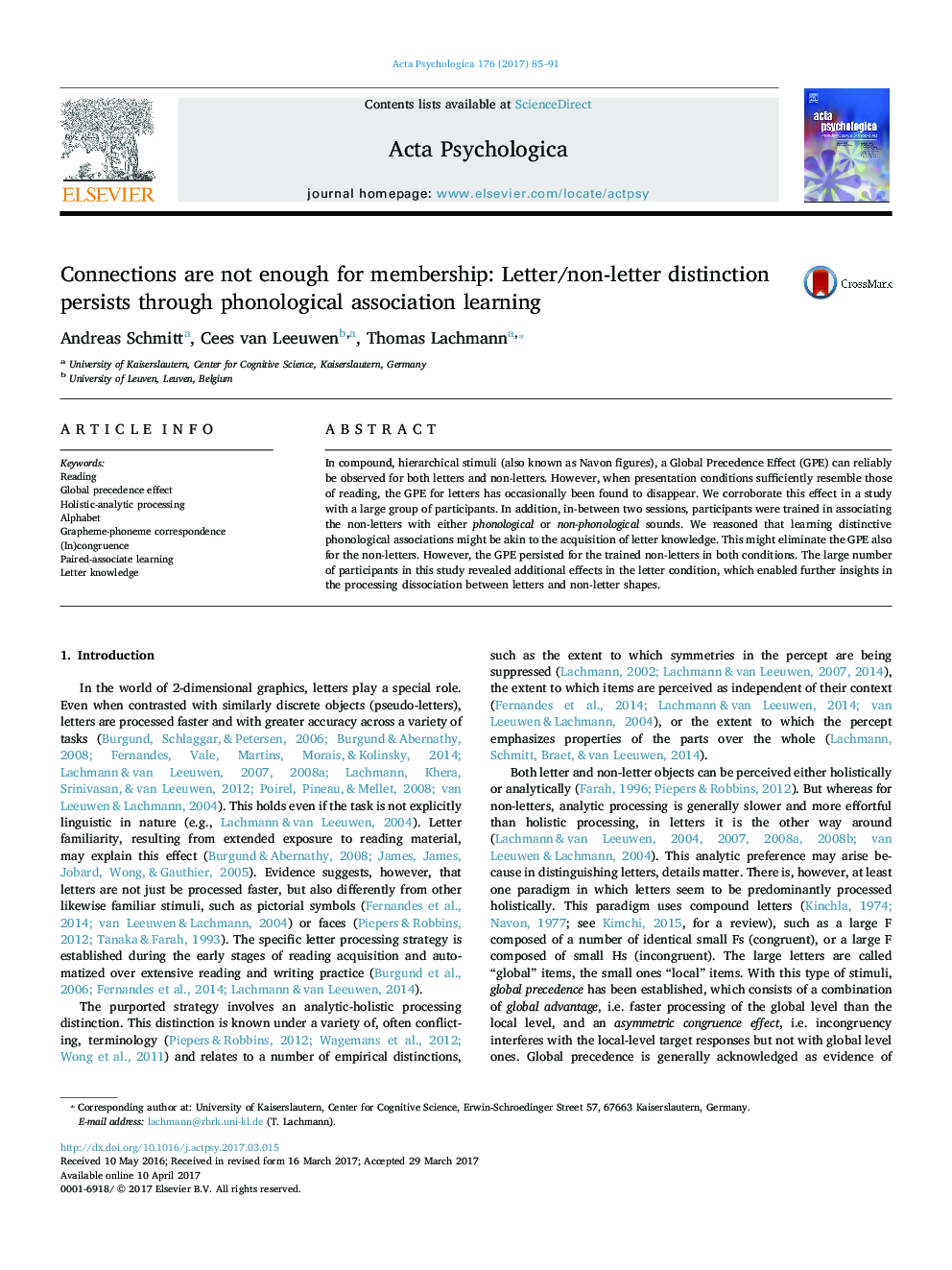| Article ID | Journal | Published Year | Pages | File Type |
|---|---|---|---|---|
| 5040211 | Acta Psychologica | 2017 | 7 Pages |
â¢Global Precedence Effect (GPE) in compound, hierarchical non-letter and letter stimuli was investigated.â¢Under reading-like condition GPE remains of non-letters, but disappears for letter stimuli.â¢Associating the non-letters with either phonological or non-phonological sound was trained.â¢GPE persisted for the trained non-letters in both conditions.
In compound, hierarchical stimuli (also known as Navon figures), a Global Precedence Effect (GPE) can reliably be observed for both letters and non-letters. However, when presentation conditions sufficiently resemble those of reading, the GPE for letters has occasionally been found to disappear. We corroborate this effect in a study with a large group of participants. In addition, in-between two sessions, participants were trained in associating the non-letters with either phonological or non-phonological sounds. We reasoned that learning distinctive phonological associations might be akin to the acquisition of letter knowledge. This might eliminate the GPE also for the non-letters. However, the GPE persisted for the trained non-letters in both conditions. The large number of participants in this study revealed additional effects in the letter condition, which enabled further insights in the processing dissociation between letters and non-letter shapes.
